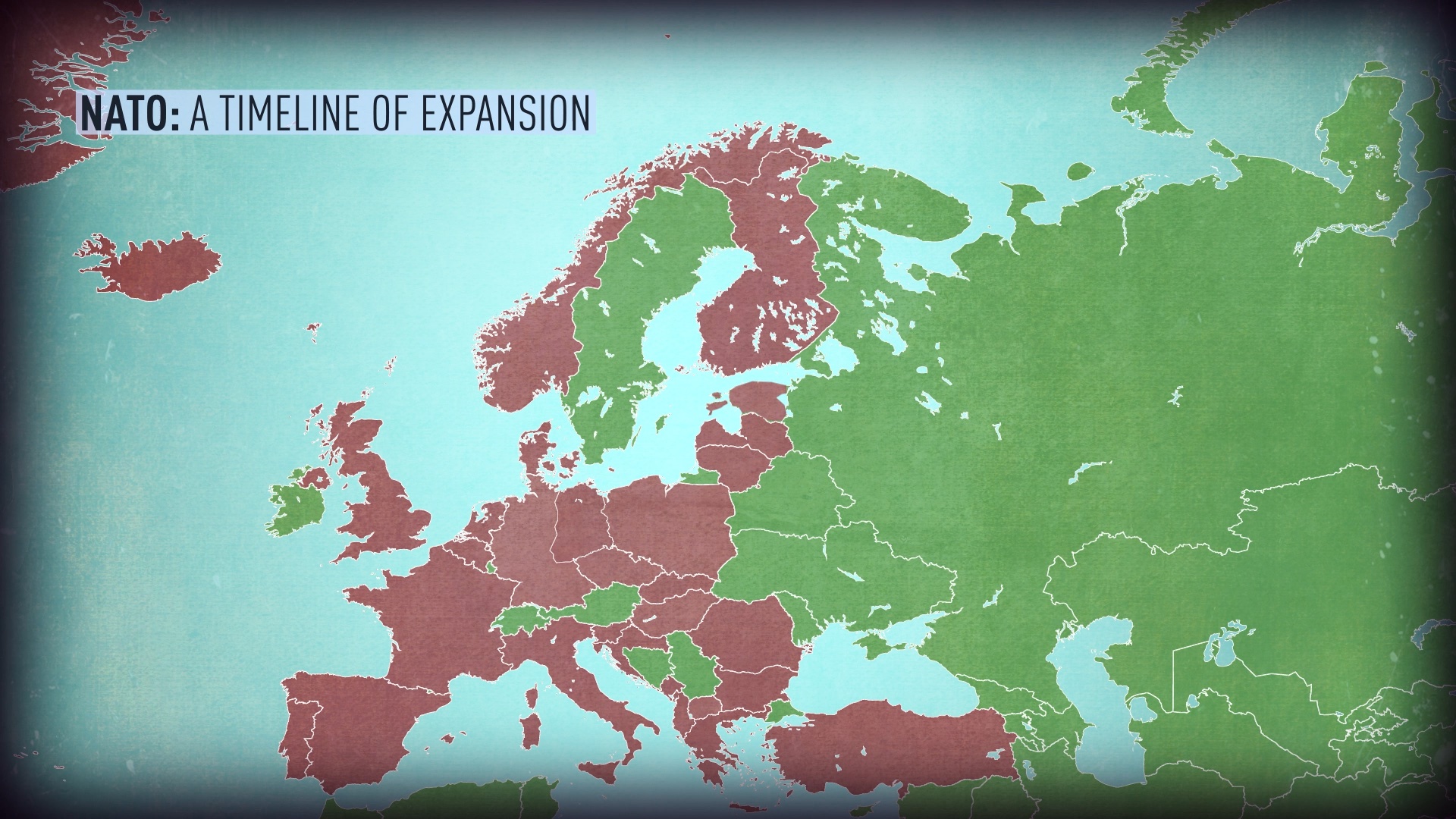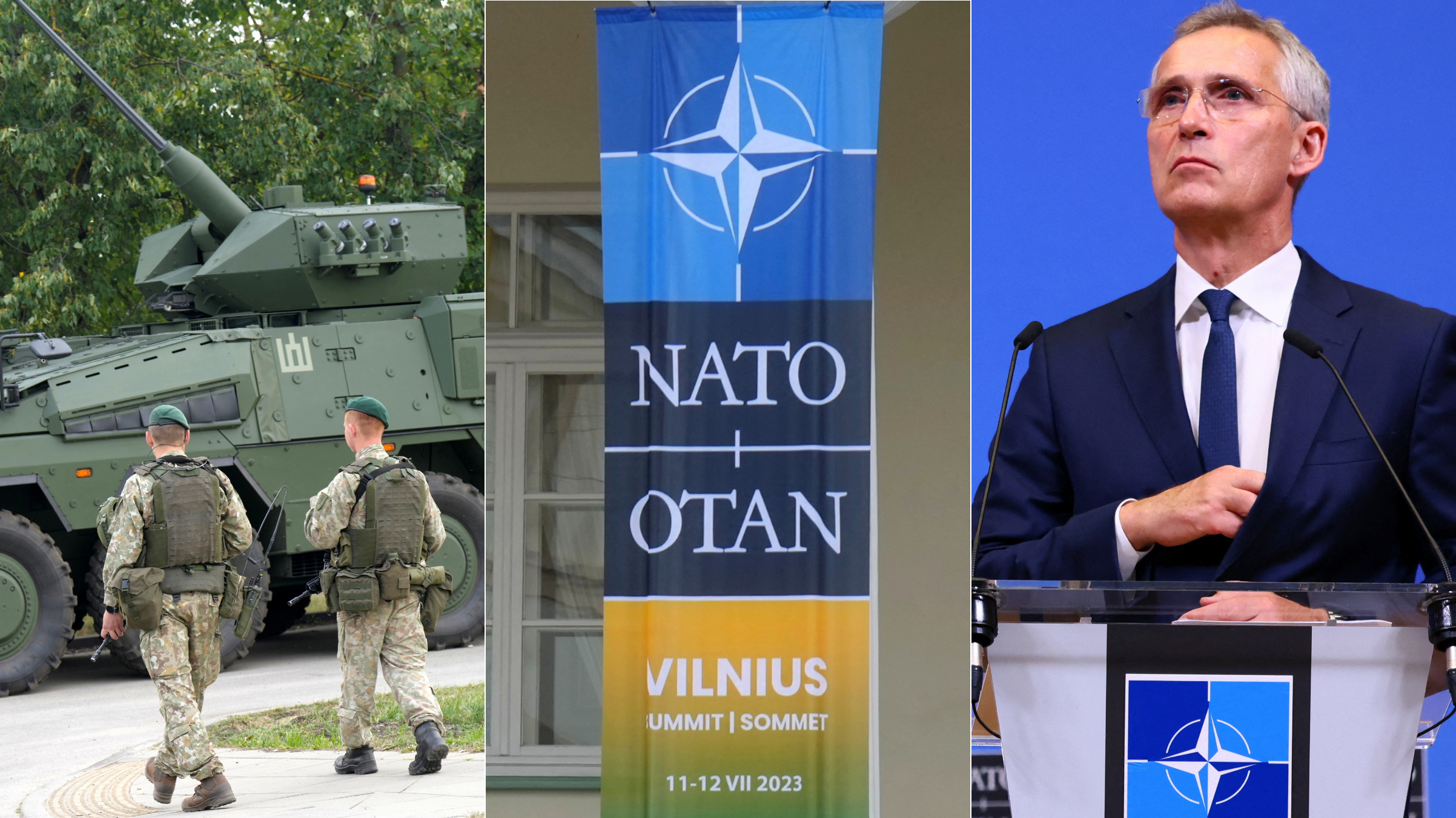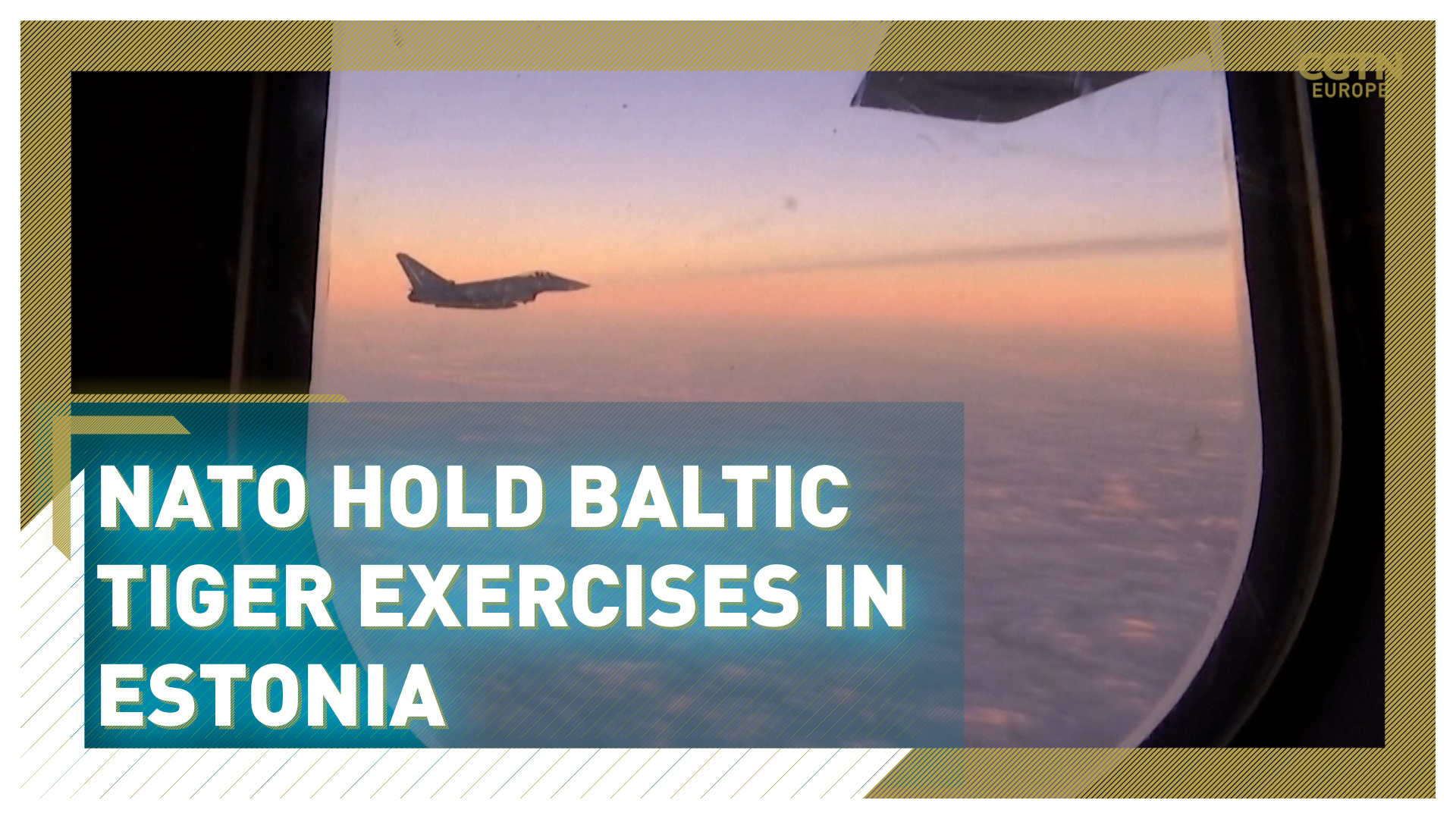01:04

WATCH: A breakdown of how NATO has expanded
Leaders of NATO are meeting on Tuesday and Wednesday in the Lithuanian capital, with a huge range of topics on the agenda. Divisions over Ukraine's membership bid, Sweden's accession to boosting ammunitions stockpiles and reviewing the first defense plans in decades will top the list.
It will be the fourth NATO summit since the start of the Ukraine conflict, with the first held virtually in February 2022, followed by meetings in Brussels and in Madrid.
Vilnius is wedged between the Russian exclave of Kaliningrad and Belarus and has long been seen as a vulnerable spot on NATO's eastern flank. Security measures will be high with three German Patriot air defense units protecting the venue and additional fighter jets patrolling the skies.
What is NATO?
NATO (North Atlantic Treaty Organization) is a Western military alliance created in 1949 by 12 countries: Belgium, Canada, Denmark, France, Iceland, Italy, Luxembourg, Netherlands, Norway, Portugal, the UK, and the U.S.
The founders were later joined by Greece, Turkey, and West Germany in the 1950s, and Spain in 1982, but many more countries signed up around the turn of the 21st century.
Members agree to aid one and another in the case of an armed attack against any individual member state, a principal known as Article 5. As the bloc says, "an attack against one ally is considered as an attack against all allies."

Security has been ramped up in the Lithuanian capital./ Ints Kalnins and Yves Herman/Reuters
Security has been ramped up in the Lithuanian capital./ Ints Kalnins and Yves Herman/Reuters
What are the main issues on the agenda?
UKRAINE MEMBERSHIP
The summit will likely be dominated by how NATO defines its future relationship with Ukraine, amid repeated calls by President Volodymyr Zelenskyy for his country to be invited into the alliance at Vilnius.
NATO Secretary General Jens Stoltenberg, who has just had his tenure extended by a year, has made clear that Kyiv will not be part of the bloc while the conflict continues, and that the Vilnius summit would not issue a formal invitation.
Allies are divided on Ukraine being a member - now or in the future. While eastern European countries say a road map should be offered to Kyiv at the summit, the U.S. and Germany are wary of any move that might escalate activities with Russia.
In the run-up to Vilnius, more countries have backed a British proposal to allow Kyiv to skip the so-called Membership Action Plan (MAP) program that sets out political, economic and military targets candidates have to meet and that other eastern European nations had to pass before joining NATO.
With such a move, the alliance could address demands to go beyond the declaration of the Bucharest summit in 2008, which said Ukraine would become a member eventually, without offering Kyiv an actual invitation or timetable.
NATO is also likely to find a stronger wording than 2008 to underscore Kyiv's perspective for joining the alliance.
Leaders could agree upon something like "Ukraine's rightful place is in NATO," echoing remarks by Stoltenberg on a visit to Kyiv in April, or stress that "trans-Atlantic security would be incomplete without Ukraine."
UKRAINE SECURITY
Leaders are expected to discuss what security assurances Kyiv should get after the conflict, even though these pledges will be bilateral and not issued by the alliance itself.
They will likely include the promise of continued military and financial aid to Kyiv to deter further aggression from Russia after the end of the conflict.
Stoltenberg has underlined that NATO - under Article 5 of the Washington Treaty - will provide full-fledged security guarantees to full members of the alliance only.
00:59

BOLSTERING NATO'S EASTERN FLANK
Leaders will review the first defense plans the alliance has drawn up since the Cold War, detailing how NATO would respond to an attack by Russia.
The revival of the so-called regional plans signifies a fundamental shift. With the plans, the alliance also gives nations guidance on how to upgrade their forces and logistics.
NATO had for decades seen no need for large-scale defense plans, but with the biggest conflict on European soil since 1945 just beyond its borders in Ukraine, it is now warning it must have all planning in place well before a conflict with a peer adversary such as Moscow might erupt.
Türkiye has been blocking approval of the plans over the wording on geographical locations such as Cyprus. The issue will be left for leaders to solve unless allies find agreement before the summit.
NATO will also raise targets for the stockpiling of ammunitions as Kyiv is burning through shells much faster than Western countries can produce them.
At the same time, allies will show how they aim to implement NATO's goal, agreed at last year's Madrid summit, of putting over 300,000 troops on high alert, up from 40,000 in the past, to counter Russia.
READ MORE
Finland becomes 31st NATO member; Sweden next?
What military strengths can Finland bring to NATO?
Why is Russia so worried about NATO?
SWEDEN
Sweden had hoped to become the 32nd member of the alliance in Vilnius but Türkiye continues to block its accession, accusing Stockholm of harboring members of militant groups on its territory and saying it must crack down on them before being allowed to join NATO.
Allies hope that Turkish President Tayyip Erdogan will lift his opposition at the summit. On Monday he linked Sweden's accession to his country's seemingly hopeless bid to join the EU.
MILITARY SPENDING TARGET
NATO allies have reached agreement to raise the alliance's target for military spending to at least 2 percent of national GDP, according to two diplomats.
Stoltenberg had intended to make NATO's previous military spending target of 2 percent of national GDP a minimum requirement rather than a goal to aim for.
In 2023, even the old target will be met by only 11 of the 31 members of the alliance, according to NATO estimates. The goal was set in 2014, when NATO leaders agreed to increase spending towards 2 percent of their GDP on defense within a decade.
The 11 allies in question are the U.S., Britain, Poland, Greece, Estonia, Lithuania, Finland, Romania, Hungary, Latvia and Slovakia.
Bringing up the rear are Canada, Slovenia, Turkey, Spain, Belgium and Luxembourg whose defense spending was under 1.4 percent of GDP.

Subscribe to Storyboard: A weekly newsletter bringing you the best of CGTN every Friday
Source(s): Reuters